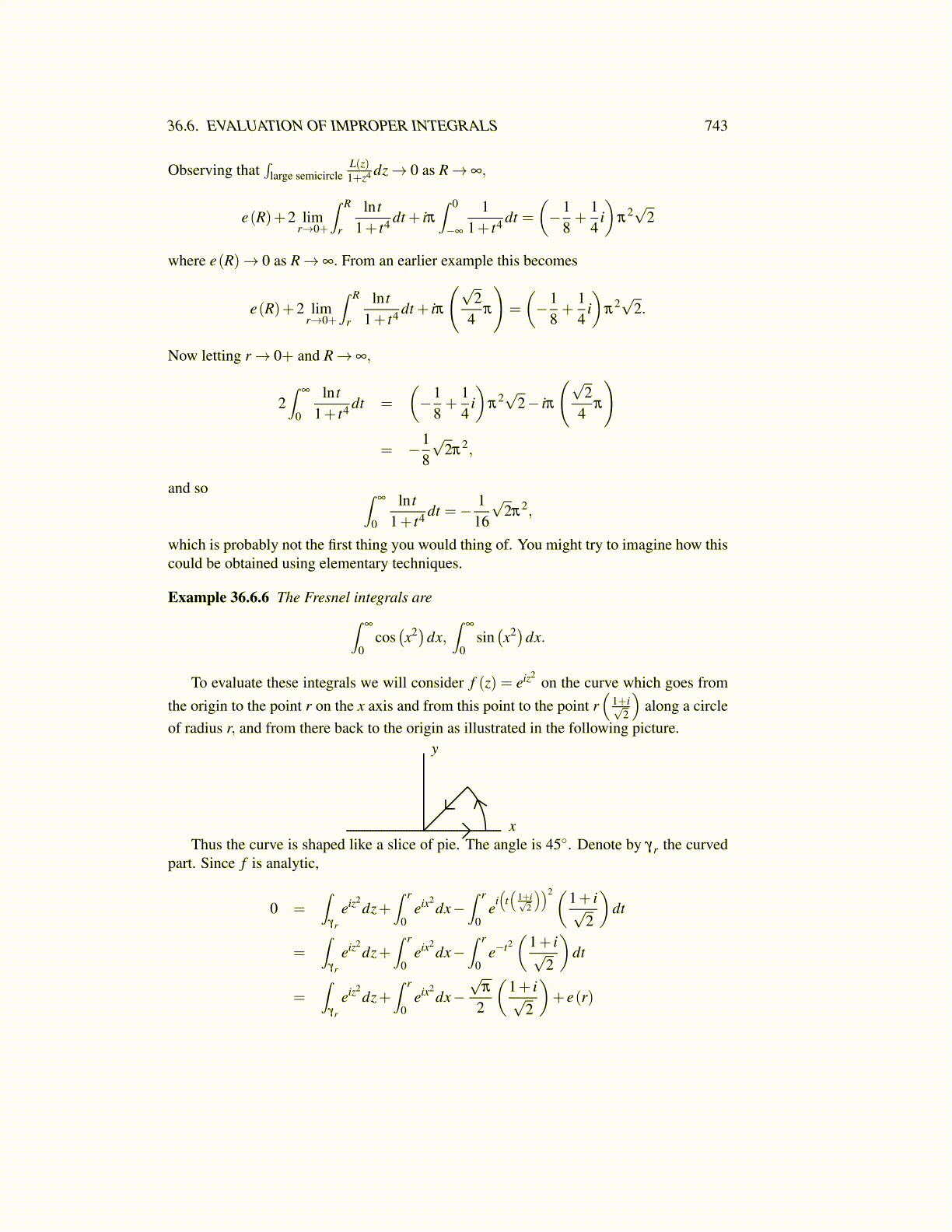
36.6. EVALUATION OF IMPROPER INTEGRALS 743
Observing that∫
large semicircleL(z)1+z4 dz→ 0 as R→ ∞,
e(R)+2 limr→0+
∫ R
r
ln t1+ t4 dt + iπ
∫ 0
−∞
11+ t4 dt =
(−1
8+
14
i)
π2√
2
where e(R)→ 0 as R→ ∞. From an earlier example this becomes
e(R)+2 limr→0+
∫ R
r
ln t1+ t4 dt + iπ
(√2
4π
)=
(−1
8+
14
i)
π2√
2.
Now letting r→ 0+ and R→ ∞,
2∫
∞
0
ln t1+ t4 dt =
(−1
8+
14
i)
π2√
2− iπ
(√2
4π
)
= −18
√2π
2,
and so ∫∞
0
ln t1+ t4 dt =− 1
16
√2π
2,
which is probably not the first thing you would thing of. You might try to imagine how thiscould be obtained using elementary techniques.
Example 36.6.6 The Fresnel integrals are∫∞
0cos(x2)dx,
∫∞
0sin(x2)dx.
To evaluate these integrals we will consider f (z) = eiz2on the curve which goes from
the origin to the point r on the x axis and from this point to the point r(
1+i√2
)along a circle
of radius r, and from there back to the origin as illustrated in the following picture.
x
y
Thus the curve is shaped like a slice of pie. The angle is 45◦. Denote by γr the curvedpart. Since f is analytic,
0 =∫
γr
eiz2dz+
∫ r
0eix2
dx−∫ r
0ei(
t(
1+i√2
))2(1+ i√2
)dt
=∫
γr
eiz2dz+
∫ r
0eix2
dx−∫ r
0e−t2
(1+ i√
2
)dt
=∫
γr
eiz2dz+
∫ r
0eix2
dx−√
π
2
(1+ i√
2
)+ e(r)